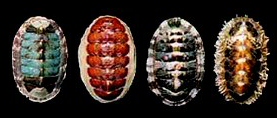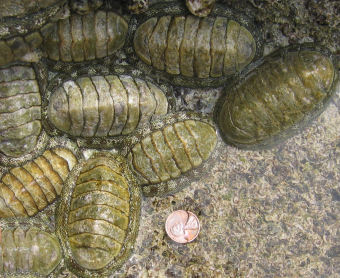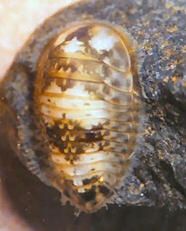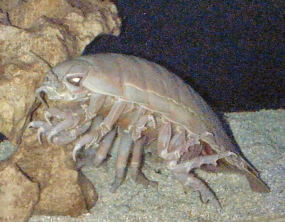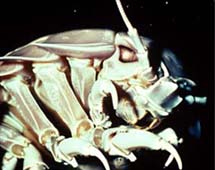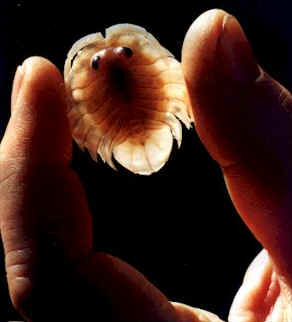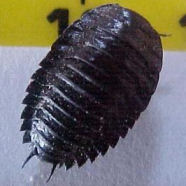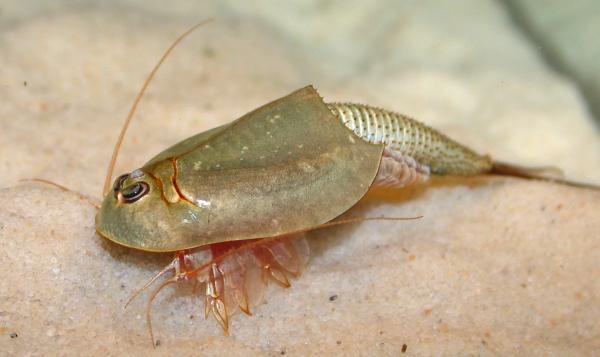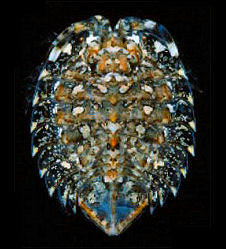
Serolina delaria is an extremely trilobite-like marine isopod |
Have you? Probably not. Trilobites have been extinct since
before the age of Dinosaurs (about 251 million years ago), but
some living creatures bear such close superficial resemblance to
trilobites that they cause great excitement when encountered.
After all, to rediscover living trilobites would be akin to the
rediscovery of the coelacanth Latimeria,
a very primitive-looking lobe-finned fish that is considered a
"living fossil." It belongs to a lineage of fishes that was
thought extinct since about 80 million years ago, in the time
of the dinosaurs. So too, a true living trilobite would be a find
of the century! Alas, no living trilobite has ever truly been documented. However, some trilobite imposters can be quite convincing. On this page we will showcase several of them, and reveal their true (non-trilobite) nature. Among the candidates are segmented mollusks (chitons), aquatic insects (water pennies), and a range of marine crustaceans (typically isopods of some sort). Some of the most convincing of these are isopods in the family Serolidae, such as the example at left. If you are fooled by any of these trilobite imposters, you are not alone! There is a fairly long history of naturalists and biologists that have been taken in, at least temporarily, by creatures new to science bearing such a strong resemblance to trilobites that excitement overcomes common sense. |
